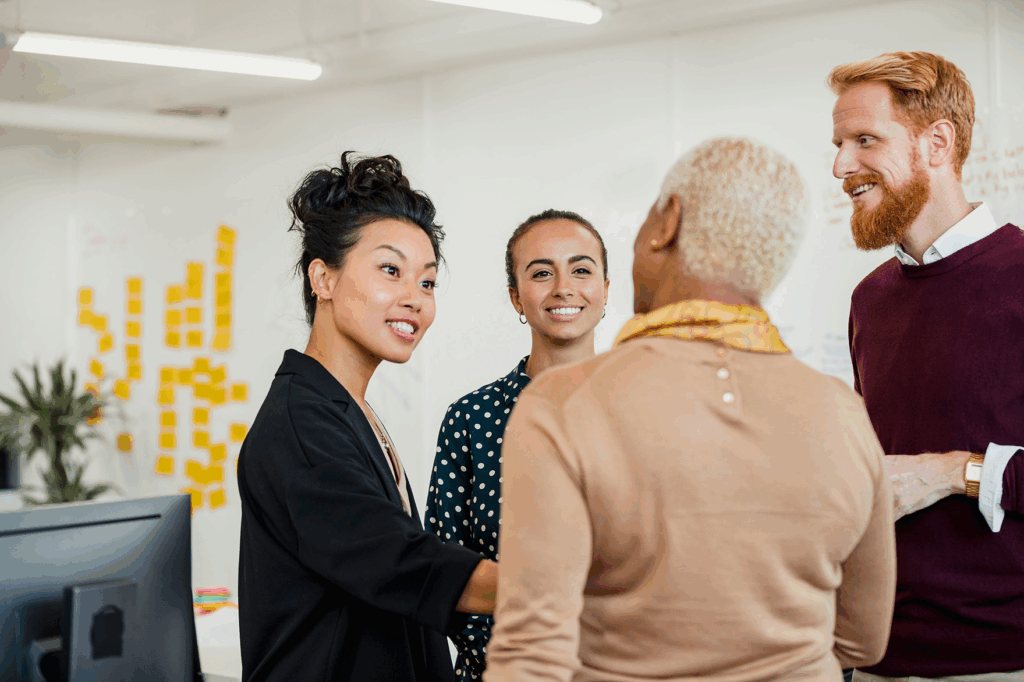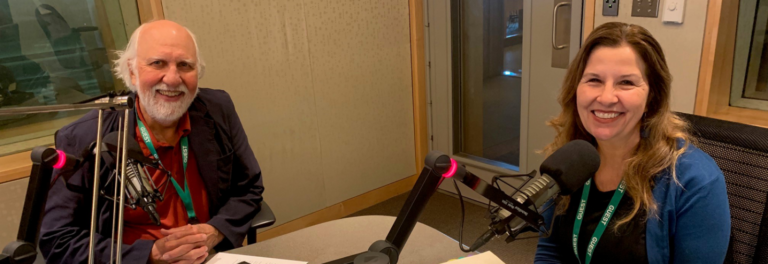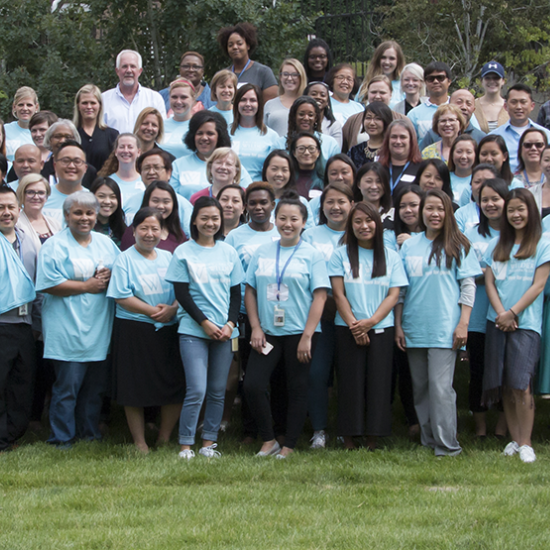Editor’s note: In November, Azra Thakur, Dylan Galos, and Amanda Hane presented their work on Ripple Effects Mapping from the Health Equity in Prevention project at the American Public Health Association conference in San Diego. The focus of this year’s conference was “Creating the Healthiest Nation: Health Equity Now.” This was their first time attending the conference, so we asked Azra, Dylan, and Amanda to share some highlights and takeaways.
Azra Thakur:
The opening session was broad in scope, covering a number of themes that appeared throughout the sessions I attended. The themes covered here have remained with me—I’m still mulling them over now weeks after attending and thinking about how I go about my day-to-day work.
- Share public health messaging outside our orbits. We heard from our nation’s Surgeon General, Dr. Jerome Adams, who encouraged public health practitioners to remember the everyday lived experiences of people beyond our professional orbits. As researchers and policymakers, we are brilliant at talking to one another with similar outlooks, but we also need to remember how to discuss our ideas with people whose views may be different from our own or who are unfamiliar with our concepts. In order to truly advance public health, he encouraged us to grapple with this as we go about our day-to-day work.
- Integrate health equity across an organization. During the opening session, Dr. Besser from the Robert Wood Johnson Foundation discussed how their organization chose to incorporate health equity within all aspects of their organization. By elevating health equity from a separate division to embedding it across their organization, they hope to elevate health equity in all aspects of their organization’s work.
- Remember the lives of those impacted. We heard from youth whose lives had been impacted by gun violence. Their lived experiences brought them to work on advocating for gun violence prevention in their local communities and at a national level. Hearing their experiences, I was reminded again of the power of our stories, and in making connections to policies and research advocacy. How can we remember to acknowledge and maintain connections to those whose work we impact the most?
Dylan Galos:
My research interests include physical activity and multimodal transportation, so the sessions I attended focused on these areas. Talks focused on the public health implications of physical activity and how the built environment influences behavior.
- Many communities are implementing strategies to make physical activity more convenient. During multiple sessions I attended, I learned about programs in different parts of the U.S. and Canada where people are piloting and developing interventions and policy changes to make active transportation more accessible and convenient (in part as a way to increase physical activity). Multiple sessions I attended talked about efforts to increase physical activity through different types of interventions. One of the most interesting talks I went to discussed transit-oriented housing, a type of design in urban planning that makes new housing more convenient for people to use public transit as part of a multimodal or car-free lifestyle, rather than developing with the assumption that all residents will use cars. Studies on these types of developments found increases in people’s self-reported physical activity. Another talk was about the impact of building an urban greenway for bicycling and walking, finding that among residents near it, there were increases in physical activity.
- Consistent physical activity can solicit improvements in health, regardless of changes in weight. Several of the talks on physical activity focused on multiple dimensions of health. In addition to learning more about the revised federal guidelines for physical activity, I learned about a study that found that among people whose weight didn’t change, those who engaged consistently in physical activity found changes in measures of health (e.g., blood pressure) without changes in weight. It’s an important message for us to hear in public health, because study after study identifies the difficulty in achieving and maintaining weight loss, and suggests that changing our behaviors is very important for our health, regardless of what the scale says.
- Physical activity can improve mental health, but social support may play a role. Last, one of the talks I went to evaluated the difference between groups of physically active college students, both who used the college rec center. Students who participated in group fitness classes reported better mental health, independent of whether people in their social network were part of the group fitness classes. The scientists who did this study are following up to understand why.
Amanda Hane:
I have been working on several projects where stakeholders have shared an interest and need for more information about how other communities are tackling health equity issues or measuring impact. I was drawn to sessions that focused on how we can better share information across geographies and how research can inform decisions.
- There are opportunities to learn from how other communities are creating change. I attended a number of sessions highlighting policy databases that communities can use to look at how other municipalities and states are addressing health through policy. Two that were highlighted included the Urban Policy and Program Surveillance Project that monitors education, environment, and housing policies across the U.S. and the All-In Cities Policy Toolkit through PolicyLink that provides policy tools in six key areas based on what has worked in other communities. As local governments can play an increasing role in implementing innovative policies, these tools can be instrumental in helping communities learn from one another.
- Narrative can play a critical role in advancing health equity. I attended the general session led by Melissa Harris-Perry, PhD political scientist and commentator, and a panel of speakers. During the session, titled “Weaving a New Narrative of Belonging for Health,” Dr. Harris-Perry and the panelists reflected on the role of narratives around inclusion and exclusion in recent years, and how narrative can be harnessed to advance health equity. One of the takeaways that I am still thinking about is a quote from Dr. Harris-Perry that “Decisions are made by how we perceive the world, not how it actually is.” As a researcher who works to get non-partisan, accurate information into the hands of decision-makers, it struck me that research will inevitably get filtered through the lens of decision-makers’ worldviews. Research is one tool that can inform public policy, but advocates, community members, and community-based organizations also play a powerful role in shaping narratives to advance change.
Azra Thakur, Dylan Galos and Amanda Hane were Wilder Research staff.




